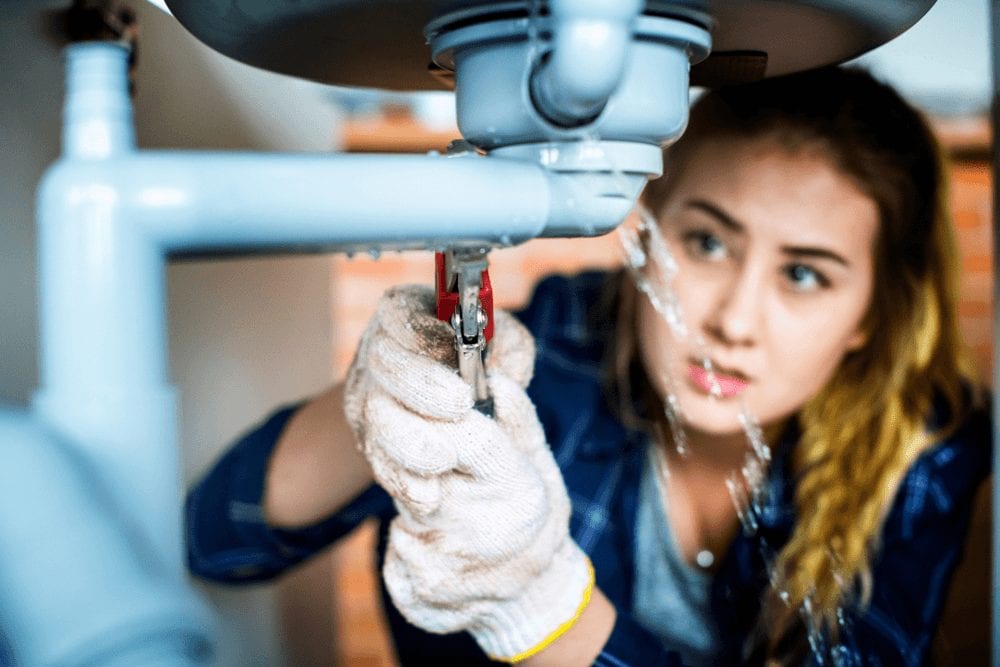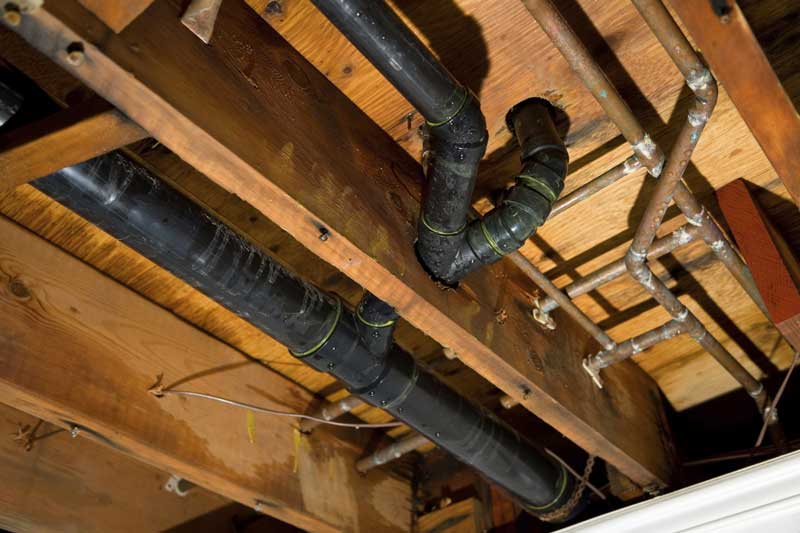Managing Plumbing Problems in Older Homes: Key Advice
Managing Plumbing Problems in Older Homes: Key Advice
Blog Article
This post in the next paragraphs pertaining to Main Plumbing Issues Found in Old Houses is exceptionally stimulating. Don't skip it.

Older homes commonly include charm, personality, and background, but they can also bring a host of plumbing concerns. Whether you're dealing with aging pipes, low water pressure, or leakages, knowing just how to deal with these usual issues is important to maintaining a secure and functional home. In this overview, we'll explore the normal plumbing obstacles dealt with by older homes and provide functional solutions to maintain your pipes in top form.
Comprehending Common Plumbing Concerns
Aging Pipes
Among the most typical issues in older homes is maturing pipes. Depending upon the period in which your home was developed, the pipelines might be made from materials that have degraded gradually, such as galvanized steel, cast iron, or even lead. These materials can wear away, end up being weak, or establish leakages, leading to water damage and possible carcinogen.
Water Quality Screening
Older pipes can impact the top quality of your water. Conduct a water quality test to check for impurities such as lead, corrosion, or other contaminations that might be presented by maturing pipes.
Solutions for Typical Plumbing Problems
Replacing Aging Pipelines
If your home has old, wearing away pipes, consider replacing them with contemporary products like copper or PEX. This can be a substantial financial investment, yet it will certainly prevent future issues and enhance the safety and security and dependability of your pipes system.
Taking Care Of Low Tide Stress
To fix low water pressure, begin by cleansing or changing old components and getting rid of mineral build-up in the pipelines. If the trouble lingers, it may be required to replace sections of corroded pipes.
Repairing and Replacing Leaking Pipes
For little leaks, you can utilize pipe clamps or epoxy putty as a momentary repair. Nevertheless, it's ideal to change dripping pipelines completely to prevent additional damage.
Updating Components
Updating old components to contemporary, water-efficient designs can enhance your home's plumbing performance and decrease water consumption. Look for fixtures with the WaterSense tag for the very best performance.
Taking Care Of Pipeline Rust
If your pipes are rusted, replacing them with corrosion-resistant products like copper, PVC, or PEX is the most effective remedy. Routine examinations and water high quality maintenance can help prevent better deterioration.
Low Water Pressure
If you're experiencing low water stress, maybe because of mineral deposits, corrosion inside the pipelines, or old fixtures that are no longer functioning successfully. This can be a significant hassle, especially in locations like showers and sinks.
Dripping Pipes
Leaks are an additional regular issue in older homes, usually brought on by corroded or damaged pipelines. Even small leakages can result in significant water damages, mold growth, and boosted water expenses otherwise attended to quickly.
Obsolete Fixtures
Obsolete pipes fixtures such as taps, toilets, and showerheads not just look old but may additionally be much less effective, prone to leakages, or incompatible with modern pipes criteria.
Pipeline Deterioration
Deterioration is a typical issue in older pipelines, particularly those made from galvanized steel or actors iron. Corroded pipelines can limit water flow, create staining, and eventually cause leakages or pipe ruptureds.
Examining the Condition of Your Plumbing
Checking Visible Pipelines
Begin by evaluating any noticeable pipelines in your house, such as those in basements, crawl spaces, or under sinks. Try to find signs of rust, leakages, or corrosion, which can suggest underlying issues.
Looking for Leakages
Check for leakages by evaluating areas around faucets, toilets, and under sinks. You can likewise check your water meter prior to and after a period of no water utilize to identify covert leakages.
When to Call a Professional
While some plumbing problems can be taken care of with DIY services, there are times when it's finest to call a specialist. If you're handling significant leakages, considerable corrosion, or are uncertain regarding the problem of your pipes, a certified plumbing professional can provide professional evaluation and repair service.
Preventive Upkeep Tips
Regular Evaluations
Consistently inspect your plumbing system for indicators of wear and tear. Capturing issues early can avoid expensive repair work down the line.
Water Pressure Policy
Ensure your water pressure is within the recommended range to avoid stressing your pipes and fixtures. A plumbing can install a pressure regulatory authority if required.
Water Top Quality Upkeep
Mount water filters or conditioners if your water high quality is poor. This can safeguard your pipes and fixtures from damages brought on by tough water or pollutants.
Positive Pipe Replacement
If your home has older pipelines, think about positive substitute before major issues occur. This can conserve you from emergency situation repair work and water damages.
Verdict
Managing plumbing issues in older homes needs a combination of watchfulness, preventive upkeep, and prompt upgrades. By recognizing the common obstacles and knowing when to look for specialist assistance, you can ensure your pipes system remains functional and reliable for years to find.
Common Plumbing Issues in Older Homes and How to Fix Them
Owning an older home in Australia comes with its unique charm and a set of challenges, especially when it comes to plumbing. The Sunshine Coast has many older properties that can harbour plumbing problems that aren t just inconvenient but potentially costly. Here s a look at some common plumbing issues in older homes and expert advice on how to handle them.
Outdated Piping Materials
Many older homes were built with galvanised steel, cast iron, or even lead pipes, materials that are far from ideal by today s standards. Galvanised pipes are prone to corrosion and clogging, while lead pipes pose serious health risks.
How to Fix:
Replacing old pipes is a job for a professional. Upgrading to copper or PVC piping not only enhances water quality and flow but also increases the property s safety and value. If you suspect your home has outdated materials, a licensed plumber can conduct a thorough inspection and recommend the best course of action.
Corrosion and Pipe Degradation
Over time, exposure to water and minerals can cause pipes to corrode, leading to leaks, bursts, and water contamination. Corrosion is especially common in homes over 50 years old.
How to Fix:
Regular inspections can catch early signs of corrosion. If corrosion is found, the affected section of piping often needs to be replaced. For homes with extensive corrosion, a complete plumbing overhaul might be necessary. It s crucial to consult with a plumbing expert to understand the extent of the issue.
Tree Root Intrusion
Older neighbourhoods usually have mature trees whose roots can intrude into pipe lines, causing blockages or damage. This is particularly problematic for sewer lines, where roots seek out water sources.
How to Fix:
A plumber can use a specialised camera to inspect sewer lines for root intrusion. If roots are a problem, methods like root cutting or hydro-jetting can clear the obstruction. In severe cases, part of the pipe may need replacing. Consider root barriers around the piping to prevent future issues.
Inadequate Water Pressure
Low water pressure in older homes can be due to various factors, including corroded water lines, sediment build-up in pipes, or outdated fixtures.
How to Fix:
First, check if the low pressure is isolated to one area or throughout the house. Replacing old fixtures can sometimes resolve the issue. However, if the problem is more widespread, it might be due to sediment or corrosion. Flushing the system or replacing the affected pipes usually restores normal pressure. Again, a professional assessment is advisable.
Outdated Fixtures
Older homes often feature fixtures that are not only visually dated but functionally inefficient. This includes everything from toilets and taps to showerheads and washing machine hoses.
How to Fix:
Updating these fixtures can improve both water efficiency and the aesthetic appeal of your home. Modern fixtures are designed to conserve water, which can significantly reduce your water bill and lessen your environmental impact.
Conclusion
Maintaining the plumbing in an older home requires a proactive approach. Regular checks and updates are key to preserving these beautiful properties. If you re facing plumbing issues in your older home, it s best to call on experienced professionals like Green & Gold Plumbing & Gas. With the right expertise, even the most daunting plumbing problems can be resolved, ensuring that your home s character is maintained while its functionality is enhanced.
https://gandgplumbing.com.au/common-plumbing-issues-in-older-homes-and-how-to-fix-them/

As an enthusiastic person who reads about Common Plumbing Challenges In Old Buildings, I imagined sharing that segment was sensible. Liked our posting? Please quickly share it. Let somebody else locate it. Thanks a bunch for your time. Kindly check up our website back soon.
Click Here To Find Out More Report this page